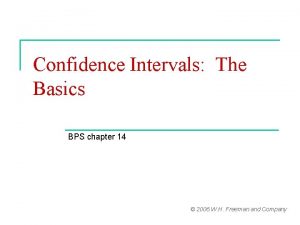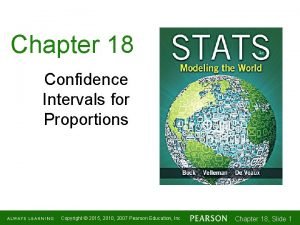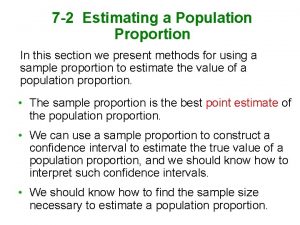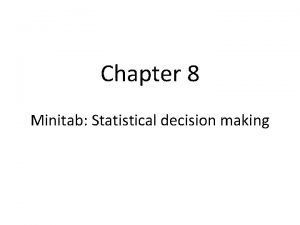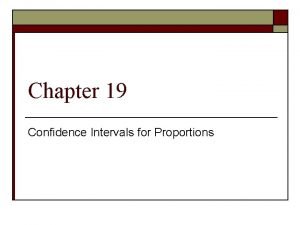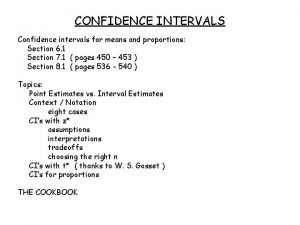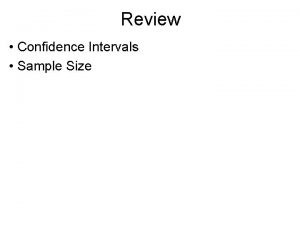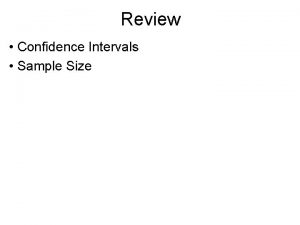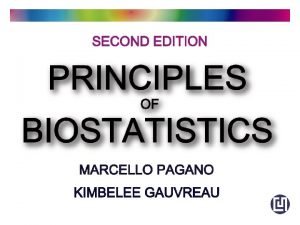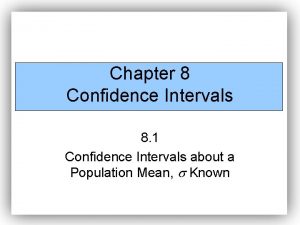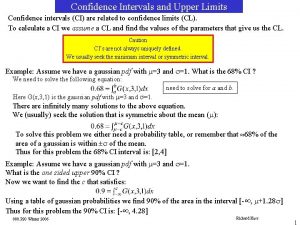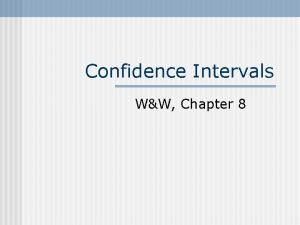Introduction to Inference Confidence Intervals Sample means to











- Slides: 11

Introduction to Inference Confidence Intervals

Sample means to sample proportions parameter statistic mean proportion

Example problem • In a study of air-bag effectiveness, it was found that in 821 crashes of midsize cars equipped with air bags, 46 of the crashes resulted in hospitalization of the drivers. – Give a 95% confidence interval for the percent of crashes resulting in hospitalization. Interpret the confidence interval.

Sample means to sample proportions parameter statistic mean proportion standard deviation Formulas:

Confidence Intervals for proportions Draw a random sample of size n from a large population with unknown proportion p of successes. Formula: Z-interval One-proportion Z-interval

Conditions for proportions •

In a study of air-bag effectiveness, it was found that in 821 crashes of midsize cars equipped with air bags, 46 of the crashes resulted in hospitalization of the drivers. Give a 95% confidence interval for the percent of crashes resulting in hospitalization. 1 proportion z-interval We assume the sample is a random sample. At least 8210 crashes in pop.

Give a 95% confidence interval for the percent of crashes resulting in hospitalization. We are 95% confident that the true proportion of crashes resulting in hospitalization lies between. 0403 and. 0718. BUT we had to assume the crashes were from a random sample, so we question the accuracy.

How large a sample would be needed to obtain the same margin of error in part (a) for a 99% confidence interval? When solving for sample size problems, always use p=. 50 in order to maximize your sample size

How large a sample would be needed to obtain the same margin of error in part (a) for a 99% confidence interval? We need a sample size of at least 6705 crashes.

OR memorize this formula (if the math in the previous slide was too difficult for you) We need a sample size of at least 6705 crashes.
 Confidence interval for variance
Confidence interval for variance Dr shaffi
Dr shaffi 96 confidence interval z score
96 confidence interval z score Reporting confidence intervals
Reporting confidence intervals Sample size confidence level
Sample size confidence level Chapter 19 confidence intervals for proportions
Chapter 19 confidence intervals for proportions Confidence interval for proportion excel
Confidence interval for proportion excel Chapter 18 confidence intervals for proportions
Chapter 18 confidence intervals for proportions How to interpret confidence intervals example
How to interpret confidence intervals example Confidence interval ti-84
Confidence interval ti-84 Confidence intervals minitab
Confidence intervals minitab Chapter 19: confidence intervals for proportions
Chapter 19: confidence intervals for proportions



